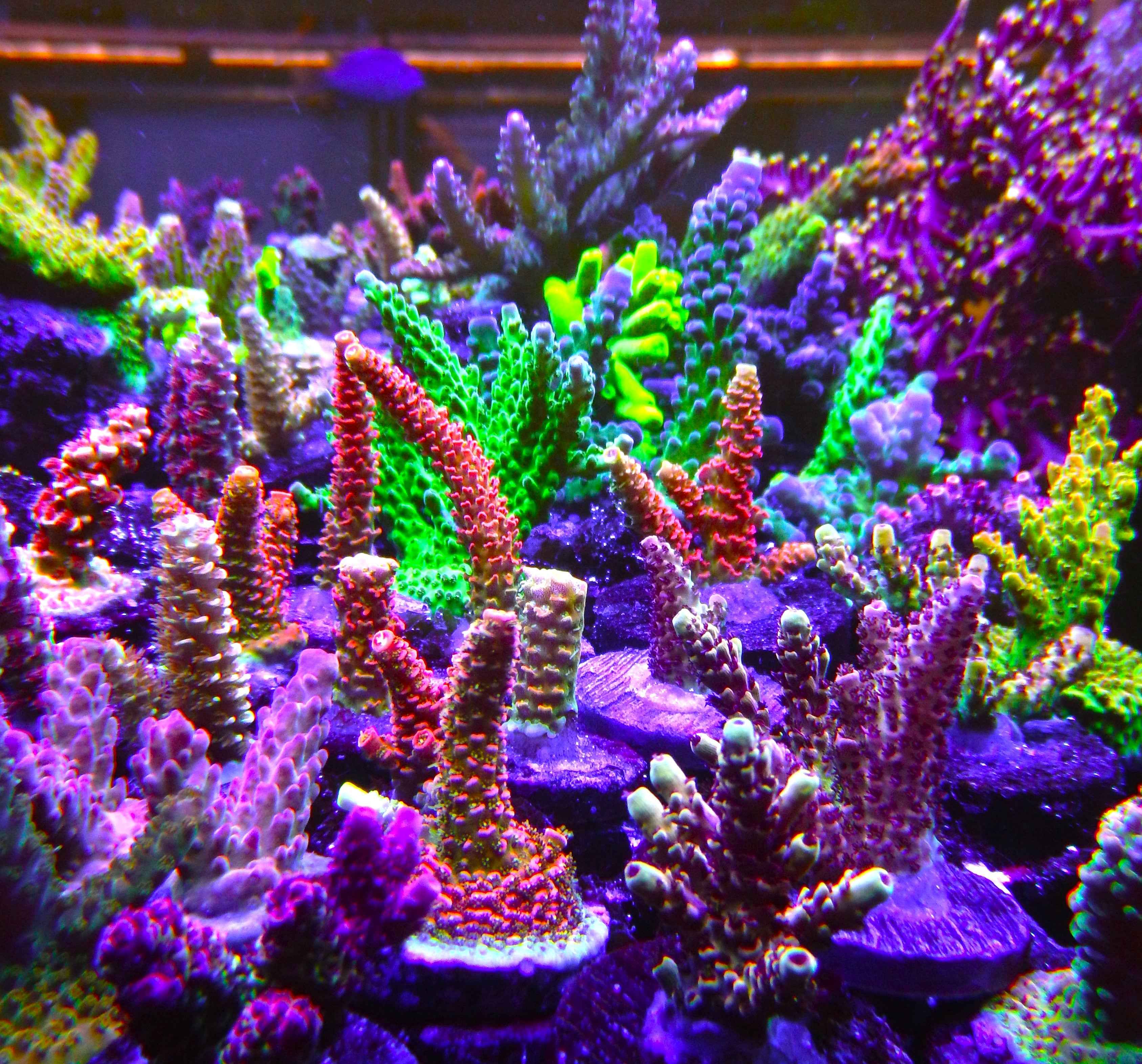
A Beginner’s Guide to Building a Saltwater Reef Aquarium
Building a saltwater reef aquarium
Are you fascinated by the colorful world of live corals and saltwater fish?
Starting a saltwater reef aquarium may seem overwhelming at first, but with the right knowledge and tools, anyone can build a thriving reef tank right at home. This guide is designed to walk you step-by-step through setting up your first reef aquarium, from equipment selection and water preparation to choosing the right corals for beginners.
Let’s dive in!
What Is a Saltwater Reef Aquarium?
A saltwater reef aquarium is a marine tank designed to replicate a natural coral reef environment. These tanks host live corals, marine invertebrates, and fish that thrive in saltwater ecosystems. Unlike freshwater tanks, reef aquariums require more precision in water chemistry, lighting, and flow.
Types of reef tanks include:
· Fish-only saltwater tanks
· FOWLR (Fish Only With Live Rock)
· Reef tanks (include corals and invertebrates)
For this guide, we will focus on reef tanks, as they offer the full coral experience.
Planning Your Reef Aquarium
Before buying anything, take time to plan. Consider the following:
Tank Size
· For beginners, a tank between 40 to 75 gallons is ideal.
· Larger tanks offer more stability in water chemistry.
· Smaller nano tanks (10–30 gallons) are more affordable but require strict maintenance.
Location
· Choose a stable area away from direct sunlight or drafty windows.
· Make sure the floor can support the tank’s weight (saltwater is heavy!).
Budget
· Setting up a reef tank can cost anywhere from $500 to $2,000+.
· Costs include the tank, stand, filtration, lighting, substrate, salt mix, test kits, live rock, and livestock.
Essential Equipment Checklist
Here’s what you’ll need to start:
· Aquarium tank and stand
· Protein skimmer
· Powerheads or wave makers for water movement
· Lighting system (LEDs are best for coral growth)
· Heater and thermometer
· Salt mix and refractometer
· RO/DI water filter system (for pure water)
· Live rock or dry rock and substrate (sand or crushed coral)
· Test kits (pH, alkalinity, calcium, magnesium)
Optional but helpful:
· Auto top-off system
· Aquarium controller (for temp, lighting, pH)
· Sump filter system
Setting Up Your Tank
1. Rinse and place the tank and stand.
2. Add substrate and dry rock (or live rock).
3. Fill the tank with RO/DI water.
4. Mix in marine salt using a powerhead until salinity reads 1.024–1.026 SG.
5. Install heater, skimmer, powerheads, and lighting.
6. Begin cycling the tank.
Cycling takes 4–6 weeks. During this time, beneficial bacteria colonize your rock and substrate, converting toxic ammonia into less harmful nitrates. You can speed this up using bottled bacteria or live rock from an established tank.
Choosing Your First Corals
Start with beginner-friendly, hardy corals that can tolerate fluctuations in water parameters. Great options include:
· Zoanthids
· Mushrooms
· Kenya Tree
· Green Star Polyps (GSP)
· Xenia
· Toadstool
· Duncan Coral
· Candy Cane (Caulastrea)
· Frogspawn and Hammer (Euphyllia genus)
These corals are forgiving, easy to feed, and don’t require intense lighting like SPS Sorals (Acropora, Montipora).
Shop these beginner corals at CFCorals.com. Your one-stop shop for aquacultured, vibrant coral specimens shipped safely to your door.
Introducing Fish and Invertebrates
After your cycle completes and nitrate levels are safe (<10 ppm), you can begin adding fish and cleanup crew members:
Beginner-friendly saltwater fish:
· Ocellaris Clownfish
· Royal Gramma
· Firefish
· Banggai Cardinalfish
· Yellowtail Damselfish (semi-aggressive)
Cleanup crew:
· Hermit crabs
· Nassarius snails
· Turbo snails
· Emerald crabs
· Peppermint shrimp
Add livestock slowly to avoid overloading your biological filter.
Coral Care Basics
Lighting
· Most beginner corals thrive under moderate LED lighting.
· Choose full-spectrum LEDs with blue channels for best coloration.
Water Flow
· Soft Corals prefer low to moderate flow.
· LPS Corals (like Duncan and Frogspawn) need moderate, indirect flow.
Water Testing
· Weekly tests recommended: pH (8.1–8.4), Alkalinity (8–12 dKH), Calcium (400–450 ppm), Magnesium (1250–1350 ppm)
· Use test kits or invest in an aquarium controller system.
Feeding
· Many corals get nutrition from light and occasional feedings.
· Offer coral foods like Reef-Roids, phytoplankton, or meaty bits for LPS.
Maintenance Routine
Daily:
· Check temperature, salinity, and livestock behavior
Weekly:
· Water testing
· Top off with RO/DI water
· Clean glass
Biweekly:
· 10–20% water change
· Clean skimmer, pumps
Monthly:
· Change filter media (carbon, GFO)
· Inspect all equipment
Common Mistakes to Avoid
· Adding too many fish too soon
· Using tap water instead of RO/DI
· Inadequate lighting for corals
· Skipping quarantine for new fish or corals
· Poor water flow leading to algae and dead spots
Final Thoughts
Building a saltwater reef aquarium is a rewarding hobby that connects you with nature's most vibrant and fascinating marine life. While it takes time and dedication, the payoff is a beautiful, living ecosystem you can enjoy for years.
Whether you are just starting out or need beginner-friendly corals, CFCorals has everything you need, from aquaculture LPS and SPS corals to saltwater Invertebrates and dry goods. Shop confidently with quality livestock, fast shipping, and expert support.
